David Klein's Blog, page 53
March 5, 2021
Dr. Seuss, Place Your Neck In This Noose
I’m conflicted that the company managing the estate of Dr. Seuss decided to stop printing and licensing a number of the author’s books. Their reasoning is that “the books portray people in ways that are hurtful and wrong.”
The books were written in a previous era, when cultural expectations were different. They included what are considered today to be racist images and stereotypical portrayals of minorities.
The decision affects six of the more than 60 books authored by Dr. Seuss (the pen name of Theordor Seuss Geisel), including his 1937 debut, “And to Think I Saw It on Mulberry Street.”
None of the discontinued books were those most beloved by readers, such as “Cat in the Hat,”
“Green Eggs and Ham,” or “Oh, the Places You’ll Go.”

As soon as the announcement was made, typical battle lines were drawn. Cancel culture is destroying America! Fox News spent most of a day skewering the canceling of Dr. Seuss. House Minority Leader Kevin McCarthy appeared on television saying that “Dr. Seuss was outlawed.”
Charles Blow, in his column for the New York Times, wrote:
“Racism must be exorcised from culture, including, or maybe especially, from children’s culture. Teaching a child to hate or be ashamed of themselves is a sin against their innocence and a weight against their possibilities.”
Charles Blow
In reality, Dr. Seuss has not been canceled. This was a decision made by a company attempting to preserve the author’s legacy while rejecting aspects of his work that don’t align with current social and cultural values. It wasn’t due to pressure from an angry woke mob or an order issued by an authoritarian, book-banning government.
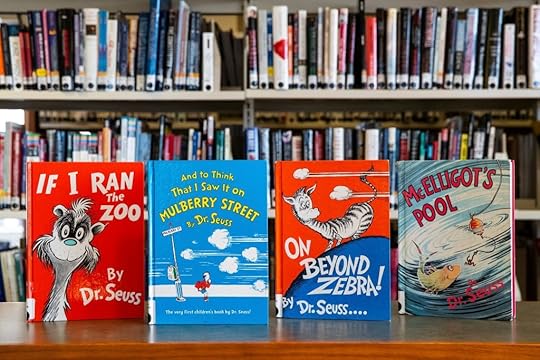
For years, the Dr. Seuss canon has been criticized for racist leanings, but most people (white people) hadn’t a clue. We hadn’t noticed anything wrong with the books looking down from the pedestal of white privilege during bedtime reading. We didn’t know the imagery could be hurtful and harmful to a large segment of children.
I was speaking with someone who loved Dr. Seuss books as a child (who didn’t!). She was angry and disgusted by the decision to no longer license or print these books.
I carefully responded:
“It’s a complex issue without an easy answer. If you were a member of a historically marginalized group and subject to constant stereotyping, might you feel differently about the decision to stop printing these books?”
She immediately attacked me. Cancel culture run amok! People are overly sensitive! What next—“Gone With the Wind?” “Huckleberry Finn?”
Which brings me to the part where I’m conflicted. I support the estate’s decision to withdraw these books, but there is the question of how far do we go. Avoiding racist stereotypes is especially important in children’s and young adult literature, when early impressions are formed that become embedded in the psyche. Adult literature is a different beast.
Is it possible to include introductions to books, films, and other art deemed problematic and use this as an opportunity to draw attention to the issues, provide historical context, and educate readers?
Like I said, there’s no easy answer. But I do know that as an author, if I were accused of being racially or gender insensitive I would be mortified. In fact, I have been.
In my novel “Stash” there is only one Black character: he’s a secondary character, a former NFL player turned drug-dealer and villain. At the time I was writing the novel, I hadn’t considered what hole I might be digging for myself. After the novel was published, I was doing a book talk in my town and a reader (who was Black) came up to me and told me how much he liked the book. So it still hadn’t registered on me what mistake I might have made. Only after one reader posted an online review that mentioned “racist undertones” in the novel did I wake up. And what did I do? I panicked. I didn’t want to be that author. I had made writing decisions that seemed to fit the story without considering what other impacts those decisions might have. That was a mistake on my part. Will I only write about middle-aged suburban white people now? Absolutely not. I want to expand, not contract, as a writer, but I’ll be more aware of the decisions I make and their potential ramifications. I read Black and Asian authors; I want them to read me.
As soon as the decision was made to no longer print or license these six Dr. Suess books, their online sales soared. Despisers of cancel culture celebrated, as if their position were proved correct. Sad.
Now, if only there were a run on the sales of “Stash.”
The post Dr. Seuss, Place Your Neck In This Noose appeared first on by David Klein.
March 3, 2021
Nocturnal Visitor

A sound or a movement alerted me and I sat still for a moment listening, hearing nothing, feeling the prickly sensation along my spine of an intruder. I carefully raised the shade and peered through the window and we locked eyes, me and this nocturnal visitor. A buck, because close to the top of its head I could see jagged nubs remaining where its antlers had been shed. Where there’s one deer there are more deer and they come often at night to graze the remnants of my frozen garden and chew the hemlocks and yews as high as their necks will crane, leaving behind their cartoonish mushroom-shaped legacy of green crowns over branches stripped bare. With much impunity he stands outside my window as if expecting an invitation inside because the leaves and needles are dull tasting and he wouldn’t mind a home-cooked meal and a sit by the fire. But what I’d like to do is to get my bow and introduce him to my arrow and turn him into my home-cooked meal. Goodnight young buck, may I see you again, somewhere else, under different circumstances.
The post Nocturnal Visitor appeared first on by David Klein.
March 1, 2021
Dia Beacon: A COVID-era Destination
Dia Beacon is located in a former box-making factory in Beacon, NY. Huge spaces have been transformed into experiential art galleries. Some of the installations are fascinating, and some are head-scratching. All of it is an immersive, altering experience.
Reservations required in the time of COVID due to limited capacity. The space is enormous, with few people about.
 From the Measurement series, by Mel Bochner. Takes up a room the size of a basketball court.
From the Measurement series, by Mel Bochner. Takes up a room the size of a basketball court. Yes, that’s a pile of broken glass, artfully arranged. No touching the artwork!
Yes, that’s a pile of broken glass, artfully arranged. No touching the artwork!
 Andy Warhol had a room to himself.
Andy Warhol had a room to himself.


 Lots of neon and fluorescent art, some of it accompanied by ominous music.
Lots of neon and fluorescent art, some of it accompanied by ominous music.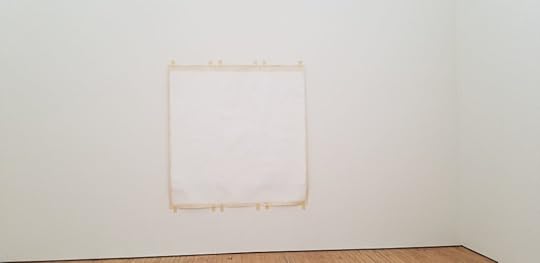
 There’s always someone (looking at you, Robert Ryman), who works in plain white. Emperor’s new clothes? It doesn’t do much for me.
There’s always someone (looking at you, Robert Ryman), who works in plain white. Emperor’s new clothes? It doesn’t do much for me. Metal grasses stuck into sand. Oddly compelling.
Metal grasses stuck into sand. Oddly compelling.The post Dia Beacon: A COVID-era Destination appeared first on by David Klein.
We Need More Mental Health Support
There’s a good chance the person you love, or just happen to be talking to, is not feeling super well.
Along with exacerbating a lot of other awful things, COVID-19 has coincided with a steep rise in mental health disorders. Forty-one percent of adults have reported symptoms of anxiety and/or depressive disorder over the past year. Only 11 percent had reported those symptoms before the pandemic (Kaiser Family Foundation).
For young adults, the situation is worse. For those ages 18-24, the percentage reporting anxiety or depression climbs to 56 percent.
Also on the increase: substance abuse, drug overdose deaths, and suicide ideation across all adult age ranges, but especially among young adults.
Calls to a suicide hotline in Los Angeles have increased 8,000 percent (The Commonwealth Fund). The National Eating Disorder Association (NEDA) has reported a spike of more than 70 percent in the number of calls and online chat inquiries to its hotline compared to the same time period last year.
Many of us, who are distanced from loved ones, feel isolated and lonely. And isolation is a petri dish for mental health disorders.
Mental health treatment and recovery depends on the exact opposite of social distancing: it requires close contact. It requires time with therapists, dieticians, and doctors. Meetings with support groups. Shared outings. A sense of community and belonging.
Unfortunately, not everyone can access needed care—pandemic or not. Adults with severe psychological distress are more likely to be uninsured. Even those with insurance can face barriers due to a lack of in-network options for mental health care and substance abuse.
Many people seeking care are finding some measure of relief using digital platforms such as telehealth. The stimulus bills contained money to expand access to telehealth and other remote care programs for those covered by Medicare, private insurance, and other federally-funded programs. And many health care companies are teaming up with tech companies to offer innovative telehealth services.
Ayana Therapy offers telemedicine therapy that uses an algorithm to match users with therapists based on their gender, orientation, ethnicity, culture, class, language, and values. Eric Coly founded the company because he had a personal unmet need for a therapist. He writes on the company’s website: “Finding a counselor one feels comfortable opening up to while of color, queer, or an intersection of both, is very difficult.”
Calm offers an app to promote sleep, meditation, and relaxation. It has been downloaded over 100 million times.
Recovery Record helps those suffering from an eating disorder stay motivated and track compliance with their meal plans. The app also allows a clinician and client to communicate regarding daily progress, so that time typically spent catching up during in-person sessions can be spent more productively on other issues. It’s a novel digital/in-person hybrid treatment approach.
These are just a few examples of innovations that might help people seeking treatment for mental health disorders. It’s not nearly enough. Health care companies need to expand and cover more treatment options to better serve their customers. Regulators must do something about onerous requirements that therapists be licensed in every state where they practice, which makes it difficult to cross state lines when providing telehealth.
Something else must be done, by all of us. We need to stay tuned to the people around us. We need to check in and ask others how they are feeling, if they are all right, if there’s anything we can do to help.
Is there anything I can do for you?
The post We Need More Mental Health Support appeared first on by David Klein.
February 25, 2021
MOLLY’S GAME
The title turned me off at first. Molly’s Game. Sounded young adult or chick flick, two genres I don’t watch often. Maybe that’s why I didn’t notice the film when it came out in 2017.
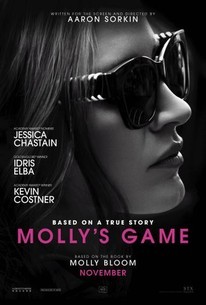
But then I discovered Jessica Chastain was the star. She’s on my list. She appeared in two movies I thought were excellent and I highly recommend: Take Shelter (she plays the wife of Michael Shannon, another favorite of mine); and A Most Violent Year (again a wife, but powerful). Both of those movies deserve a lot more attention than they’ve gotten.
Chastain also played a savvy and obsessive CIA agent in Zero Dark Thirty.
In Molly’s Game, she plays Molly Bloom, who rises from waitress to personal assistant to hosting a super high-stakes poker game, where insanely rich people might drop more than $500K on their gambling addiction in a night.
The movie is based on the true story of Molly Bloom, who ran a poker game for movie stars, famous athletes, and CEOs. A few years into her venture, she got arrested by the FBI.
The film opens with Molly getting arrested, so that part is no spoiler, and then her backstory fills in. There’s a great sequence of young Molly as a promising, Olympic caliber skier under the thumb of a domineering father (Kevin Costner). Here we discover the origin of Molly’s feelings towards powerful father figures. There follows a lot of sharp scenes of Molly handling a group of rich, entitled men. It’s a rotating cast of card players, but several are regulars and we get a little closer to the root of their gambling, their neediness.
The screenplay is strong, with Chastain’s first person voice over moving the story always forward, even during flashbacks. I have a weakness for voice over in film, because it’s literary. Done right, voice over in movies combines the best of the written word and visual storytelling.
Overall, the dialog strikes as authentic. Quick visual editing gets across the concept of poker and its pressure stakes, without dulling viewers with an actual game. There’s nothing shocking or even surprising about the ending, but the climax and conclusion fit the story well.
See Molly’s Game for an entertaining experience. And definitely see Jessica Chastain in her supporting roles in Take Shelter and A Most Violent Year.
4/5 Stars
The post MOLLY’S GAME appeared first on by David Klein.
February 24, 2021
A Walk On the Ice

Cross here?
What do you think?
Looks pretty good. Better than downstream.
The ice is strong right here. Just a little slush on top.
What about out the middle?
I don’t know. It looks okay.
How deep is the water?
Just a couple of feet here. But out there, over your head.
Great.
What do you think?
Sun’s out. It’s a warm day.
You don’t think we should?
What are we going to do on the other side?
I want to see those abandoned cabins.
Okay.
So are we going to cross?
If you think we should. I haven’t been on ice like this in a while.
We should stay apart if we do.
How far apart?
Twenty feet.
Okay.
I’ll go first if you want.
Go ahead.
It’s pretty slushy. I’m sinking in.
It feels solid underneath.
Should be okay.
The post A Walk On the Ice appeared first on by David Klein.
February 22, 2021
There’s a Lot Going On Behind a Simple Email

That’s an email I got from my literary agent, about a year ago. How I appreciate the beauty and precision of a clear and concise email.
I’ve given workshops called “Mastering Business Email.” I hammer on the need to be clear and concise in your purpose, meaning, and word choice. My agent, although she didn’t attend my workshop, checked all the boxes on that email.
There’s also the concept of writing a compelling email—but only your audience gets to decide if what you write is compelling. If your email is targeted to the right person and your message is essential to them, your chances of being compelling go way up.
This email was my agent’s response after reading a novel I’d written, The Suitor. I was the sole audience for this email, and I found it compelling.
You’ve got something here says it all.
That email kicked off a year of back and forth between agent and author. The first task was to write a few more drafts of the novel to incorporate insightful editing suggestions from said agent and resolve some issues. There are always issues.
Then she suggested I come up with a new title, because The Suitor sounded old-fashioned while the novel was anything but. I came up with a new title that we both liked, but then we reverted back to The Suitor, which is a term getting a lot of attention these days because of the hit Netflix show Bridgerton (a bodice-ripping romance, which my novel is not).
Then we had to come up with the “logline” to hook an editor. My agent puts it like this: “When the person next to you at a dinner party asks what your book is about, what do you tell them?”
Answer: nothing. There are no dinner parties these days.
I hate writing these one-line pitches. Who can reduce to a line or two their 300-plus page complex and nuanced novel? You could never explain the story. You could never do justice to the key characters and conflict.
You had to do something.
Logline attempt:
“When a recent college graduate falls for a charming schemer, her father becomes obsessed with preventing the marriage.”
Getting there, but not quite. A little more pizazz, please.
More attempts. More attempts. Collaborating with my agent, we came up with a final logline:
“A young woman lured by the party life falls for a charming and ambitious schemer just this side of dangerous. Her father, determined to protect his daughter and conceal a secret, will do anything to keep them apart.”
Is that the essence of The Suitor?
I spent a long time writing this novel. It happened over the course of years, not months. Early drafts wandered and lacked a strong resolution. I added characters, I took them away. The middle sagged. I put the manuscript down and wrote other fun stuff. I came back to it.
I had three interconnected characters that propel the story: the daughter (Anna), her new love interest (Kyle), and Anna’s father (Art). I was drawn to each of them, sympathetic to their challenges, their strengths, their weaknesses. Anna wanted adventure and distraction to help put a traumatic event behind her. Kyle so wanted to be somebody special. Art was faced with his own mortality and began to get a bit unhinged.
But I struggled with point of view and emphasis while writing. Whose story was I telling?
It wasn’t until I decided to structure the novel as alternating chapters with each chapter narrated by either Art, Anna, or Kyle that the story really crystalized and gained momentum. Each of them became the hero or antihero of their own story—and the villain in someone else’s.
Compelling? So I’ve heard from early readers. Because readers are the ones who decide.
Then the other day I got this email from my agent.

Again, the clear and concise language. She told me what I needed to know, no more or less. A major publisher has The Suitor in their hands.
Now I need to wait, which through experience I’m good at doing. Could be weeks, could be months.
If you’d like to read the first chapter of The Suitor, it’s right here.
The post There’s a Lot Going On Behind a Simple Email appeared first on by David Klein.
February 21, 2021
What Mom Told Vince, She Told Me
I would have been twelve, thirteen, this moment I’m remembering. My mom, Irene Klein, was back at work part time taking X-rays for an orthopedic group, my dad working long executive hours. Vince was my mother’s young work colleague and she’d him invited to have dinner with us.
My sibs and I squeezed him in at our sagging plank table on the screened porch, sticky fly traps dangling overhead. Vince was fifteen years older than me and fifteen younger than my mom, lanky with long curly hair—a smooth Italian dude from Buffalo’s west side. That was a lot of credentials in my book.
He took X-rays at the same practice as my mom. But he was full of self-doubt, he was so conflicted, he didn’t know what to do. He admitted this, right in front of us. I wasn’t used to anyone talking that way—on such a personal, confessional level.
Vince says what he really wants to do is become a doctor, like the guys they’re working for, but he still has a few courses to finish his degree and then he has to get into medical school, and there was the fact he was already twenty-nine years old, he was already married and they’re talking about having a kid, and becoming a doctor is going to take so many years. He didn’t know if he could, or should, do it.
My mother was still at the stove, the sauce simmering. She had just put the spaghetti in to boil and the steam rose in front of her face like she were a genie appearing from the pot.
She told Vince, Those years are going to pass no matter how you spend them.
That’s all she said, or all I remember, but I understood immediately what my mother meant: follow your dreams.
She had spoken without hesitation, which was no surprise to me, but I didn’t realize her expertise included matters of the heart. It’s like she knew the exact prescription for her tortured young colleague who faced a crossroads in life.
My mom didn’t say, Well, Vince, maybe take a moment to examine your goals. She didn’t say, Let’s look at the situation rationally. She didn’t say, What do you think is the realistic course of action?
She said those years are going to pass anyway.
That’s not just follow your dreams. There’s a warning in there, too: you pass through time only once, so do your best to make it count.
My mom loved our cottage in Canada—the beach and the casual change of pace. When she had an opportunity, she knew how to relax and enjoy herself. She knew how to hold a cigarette in one hand and a drink in the other.
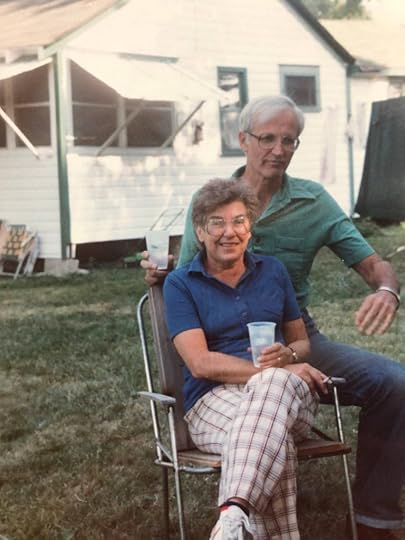
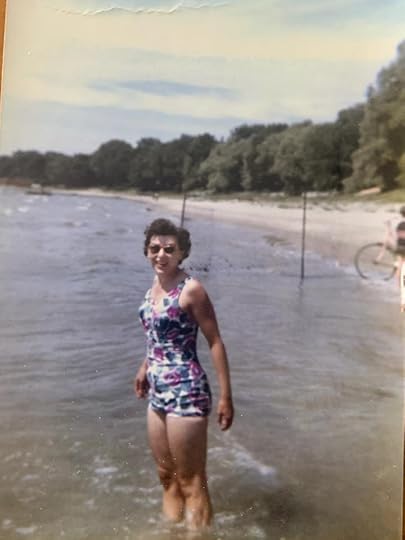
I wonder what were her dreams. She was a Niagara Falls girl and married a Buffalo boy. She died at too young an age. Did she dream bigger than being a housewife and mother of five and returning to work part time when her kids were older?
My mom never talked to me, per se, about following my dreams or being aware of time’s precious quality. But I was an observer, and an admirer, and I learned from her. I tried to follow my dreams.
But I wish she had hinted about how to handle your dreams when they shift like the tides or when they are a bit misguided. Or when dreams are shattered. I’m sure she’d have something wise to say.
As for what happened to Vince, what decision he’d made about trying for medical school—that’s a different story, unknown to me.
The post What Mom Told Vince, She Told Me appeared first on by David Klein.
What Mom Told Vince, She Told to Me
I would have been twelve, thirteen, this moment I’m remembering. My mom, Irene Klein, was back at work part time taking X-rays for an orthopedic group, my dad working long executive hours. Vince was my mother’s young work colleague and she’d him invited to have dinner with us.
My sibs and I squeezed him in at our sagging plank table on the screened porch, sticky fly traps dangling overhead. Vince was fifteen years older than me and fifteen younger than my mom, lanky with long curly hair—a smooth Italian dude from Buffalo’s west side. That was a lot of credentials in my book.
He took X-rays at the same practice as my mom. But he was full of self-doubt, he was so conflicted, he didn’t know what to do. He admitted this, right in front of us. I wasn’t used to anyone talking that way—on such a personal, confessional level.
Vince says what he really wants to do is become a doctor, like the guys they’re working for, but he still has a few courses to finish his degree and then he has to get into medical school, and there was the fact he was already twenty-nine years old, he was already married and they’re talking about having a kid, and becoming a doctor is going to take so many years. He didn’t know if he could, or should, do it.
My mother was still at the stove, the sauce simmering. She had just put the spaghetti in to boil and the steam rose in front of her face like she were a genie appearing from the pot.
She told Vince, Those years are going to pass no matter how you spend them.
That’s all she said, or all I remember, but I understood immediately what my mother meant: follow your dreams.
She had spoken without hesitation, which was no surprise to me, but I didn’t realize her expertise included matters of the heart. It’s like she knew the exact prescription for her tortured young colleague who faced a crossroads in life.
My mom didn’t say, Well, Vince, maybe take a moment to examine your goals. She didn’t say, Let’s look at the situation rationally. She didn’t say, What do you think is the realistic course of action?
She said those years are going to pass anyway.
That’s not just follow your dreams. There’s a warning in there, too: you pass through time only once, so do your best to make it count.
My mom loved our cottage in Canada—the beach and the casual change of pace. When she had an opportunity, she knew how to relax and enjoy herself. She knew how to hold a cigarette in one hand and a drink in the other.


I wonder what were her dreams. She was a Niagara Falls girl and married a Buffalo boy. She died at too young an age. Did she dream bigger than being a housewife and mother of five and returning to work part time when her kids were older?
My mom never talked to me, per se, about following my dreams or being aware of time’s precious quality. But I was an observer, and an admirer, and I learned from her. I tried to follow my dreams.
But I wish she had hinted about how to handle your dreams when they shift like the tides or when they are a bit misguided. Or when dreams are shattered. I’m sure she’d have something wise to say.
As for what happened to Vince, what decision he’d made about trying for medical school—that’s a different story, unknown to me.
The post What Mom Told Vince, She Told to Me appeared first on by David Klein.
February 19, 2021
Joan Didion–THE CENTER WILL NOT HOLD
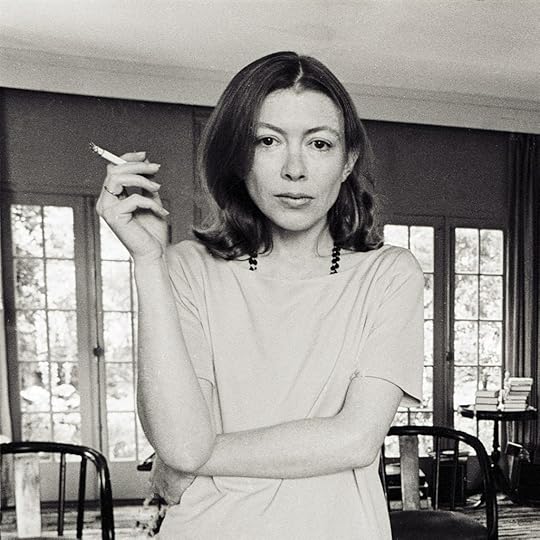
“We tell ourselves stories in order to live.” The author of that line, Joan Didion, is a rare breed in America: a literary writer with rock star status.
I finally had the pleasure of watching the 2017 Netflix documentary about Didion, The Center Will Not Hold.
The film expertly compiles and edits conversation with the 82-year-old Didion, interviews, and historical footage and photographs–covering Didion’s entire life in just under 100 minutes of screen time. Naturally, the strokes are broad, and no subject is plumbed to its depths, although extra attention is paid to the death of her husband, the writer John Gregory Dunne, and later, her daughter, Quintana Dunne.
Didion came of age as a writer in the 1960s and 1970s, when she wrote several novels and a slew of journalistic essays on the sizzling topics of the times: the Manson murders, the acid-washed squatters of Haight-Ashbury, the civil war in El Salvador, Rock music, and, back in New York after living in California, the Central Park Five.
Many of those essays are collected in two of her earlier books, Slouching Toward Bethlehem and The White Album. I read them both in my own formative writing years. I’ve also read several of her novels: Run River (her first) and Play It As It Lays.
If you’re any kind of writer or are familiar with her work, The Center Will Not Hold is an inspiring tribute to a remarkable literary talent. If you haven’t read Didion yet, the film opens the door to revelation. You may want to run out and acquire some of her books.
I write entirely to find out what I’m thinking, what I’m looking at, what I see and what it means. What I want and what I fear.
Joan Didion
Immediately after watching the film, I started scouring my bookshelves to see what Didion I owned. I have the novel, The Last Thing He Wanted, and her most recent book, Blue Nights, written after the death of her daughter. I’ve moved both of those books to the top of my reading list. If you have the fortitude for one of the finest and most fraught explorations of grief, try The Year of Magical Thinking, which covers the year following the death of her husband.
In the documentary film, Didion’s lips are glossy red, her manner animated, her gestures profound. At one point, the interviewer (her nephew, Griffin Dunne), asks her about an essay she’d written back in the day on Jim Morrison and The Doors.
“So did you like The Doors?” he asks.
“Oh, yes, very much.”
“Why?”
Didion gives a dismissive wave of her hand, as if swatting away a too-obvious question. “Bad boys,” she says. Succinct and meaningful with her words.
Character—the willingness to accept responsibility for one’s own life—is the source from which self-respect springs.
Joan Didion
The post Joan Didion–THE CENTER WILL NOT HOLD appeared first on by David Klein.



